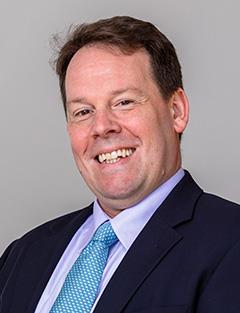-
About
- Departments & Offices
-
Academics
- Physician Assistant
- Special Master’s (MBS)
-
Admissions & Financial Aid
- Tuition & Fees
-
Student Experience
-
- Student Resources by Program
- Academic & Student Support
- Wellness & Wellbeing
- Student Life
- Events & Traditions
-
-
Research
- Research Labs & Centers
-
Local & Global Engagement
- Global Health Programs
- Community Engagement

James Kubilus
(617) 636-6682
136 Harrison Avenue, Room MV525G

Research/Areas of Interest
I no longer maintain an active research lab. The goal of our research was to characterize the embryonic development of the mechanisms that protect the cornea. We strove to address gaps in the knowledge of how the cornea is innervated and how the corneal stem cell niche is formed during embryonic development. Both of these serve to protect the cornea from damage, and when they don't work properly conditions like dry-eye and limbal stem-cell deficiency may develop. We investigated the role of a novel structure, which we called the limbal band, in the normal development of both corneal innervation and the limbal niche. Corneal nerves and limbal stem cells both protect and maintain the health and function of the cornea, but little is known about their normal development. We identified the limbal band through changes in the morphology of its cells, its ability to block the diffusion of certain molecules and by the appearance of the stem marker N-cadherin. We found that the formation of the limbal band is developmentally regulated and happens at the same time as nerves initially enter the cornea. Later in development it forms the division between the corneal epithelium, which is densely innervated by sensory nerves, and the conjunctival epithelium, which has very few nerves, suggesting a mechanism for this differential regulation. The work is significant because it addresses a gap in knowledge and provides new insights into how the cornea develops and is protected from damage.
Education
- Doctor of Philosophy, Tufts University, USA, 2009
- Bachelor of Science, University Vermont, USA, 1998
Biography
Dr. James Kubilus earned his PhD degree in Cell, Molecular and Developmental Biology from the Tufts Graduate School of Biomedical Sciences. He stayed at Tufts to do his post-doctoral training with Dr Tom Linsenmayer in developmental biology of the eye and then joined the faculty to continue these studies and teach in Tufts graduate medical education programs.
Dr Kubilus teaches Anatomy in the medical, dental, MBS and PA programs. He co-directs, with Dr Leavis, the integrated first-year Dental School Neuroscience course. He is currently the Associate Faculty Director of the MBS Program and serves as the chair of the MBS curriculum committee and thesis coordinator. Being an advisor to students is his favorite role.
Dr Kubilus teaches Anatomy in the medical, dental, MBS and PA programs. He co-directs, with Dr Leavis, the integrated first-year Dental School Neuroscience course. He is currently the Associate Faculty Director of the MBS Program and serves as the chair of the MBS curriculum committee and thesis coordinator. Being an advisor to students is his favorite role.